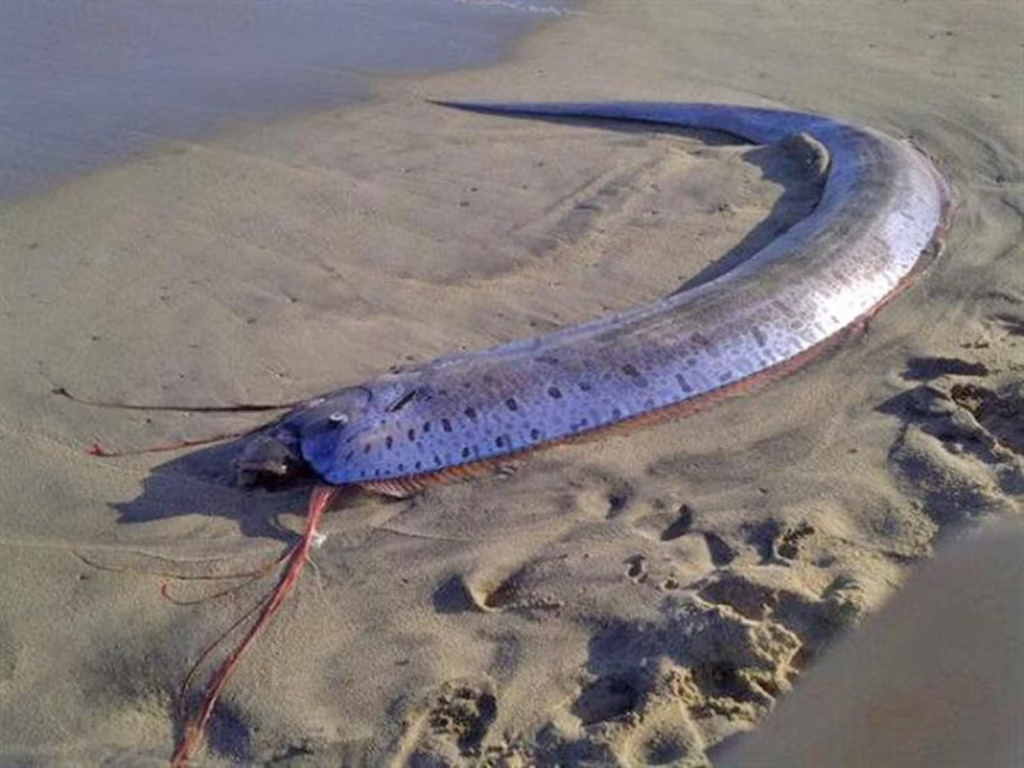In recent years, reports of bizarre and rarely seen sea creatures appearing near the ocean surface—or even washing up on shore—have made headlines around the world. From giant squids surfacing near Japan to deep-sea oarfish being found dead on beaches, it seems as though the deep is rising. Sea creatures that traditionally dwell thousands of meters below the surface are appearing in places they’ve never been seen before. But why is this happening?
Is it a natural phenomenon, a sign of impending disaster, or a consequence of human disruption? The truth is a complex mix of environmental, ecological, and behavioral factors. This article examines why sea creatures are emerging to the surface and what their presence reveals about the health of our oceans—and the Earth itself.
1. Climate Change and Warming Oceans
One of the most significant reasons for this phenomenon is climate change. As global temperatures rise, so do ocean temperatures, especially near the surface.
Deep-sea creatures are adapted to survive in cold, stable environments with little light and few temperature fluctuations. But as the temperature of ocean layers changes, the boundary between surface and deep waters becomes unstable. Some species are forced to migrate vertically in search of optimal conditions. When deeper waters warm or lose oxygen, creatures flee upward into unfamiliar, warmer waters, often leading to stress, disorientation, or even death.
Additionally, changes in ocean currents caused by warming seas can displace deep-dwelling organisms, causing them to be swept into shallower zones where they don’t belong.
2. Ocean Acidification
Oceans absorb nearly 30% of the carbon dioxide emitted by human activity. This CO₂ reacts with seawater, forming carbonic acid, which lowers the pH of the water—a process known as ocean acidification.
Many deep-sea species, particularly those with calcium-based shells or skeletons, are vulnerable to changes in pH. Acidified waters can damage their bodies or interfere with sensory organs. When their habitats become chemically hostile, they may rise to higher levels in search of refuge, only to encounter an even more perilous environment closer to the surface.
3. Seismic Activity and Natural Disasters
A long-standing theory suggests that the appearance of deep-sea creatures near the surface is linked to underwater seismic activity. In Japanese folklore, the surfacing of oarfish, known as “Ryugu no tsukai” (Messengers from the Sea God’s Palace), is considered an omen of earthquakes.
While not definitive, some scientists believe seismic tremors, underwater landslides, or the movement of tectonic plates can disrupt deep-sea environments, forcing creatures upward. Some speculate that animals like the oarfish, which are sensitive to vibrations and changes in water pressure, may attempt to escape what they interpret as dangerous changes in their environment.
In several documented instances, deep-sea fish have appeared in large numbers before or after undersea earthquakes, supporting the theory that the ocean’s shifting geology may be a trigger for these events.
4. Pollution and Hypoxia (Oxygen Depletion)
Oceans are becoming more polluted with chemicals, plastics, oil spills, and runoff from agriculture and industry. These pollutants often settle at the ocean bottom, disrupting deep-sea ecosystems.
Additionally, warming oceans and pollution lead to the formation of hypoxic zones in the ocean, where oxygen levels drop dangerously low. Fish and other marine life cannot survive in these “dead zones” and must rise toward the surface, where oxygen levels are higher.
However, many deep-sea species are poorly equipped for surface conditions. Exposure to light, heat, and low pressure can disorient or kill them. This is why many of these creatures are found dead or dying when they surface.
5. Overfishing and Habitat Disturbance
Human activities such as bottom trawling, deep-sea mining, and deepwater drilling disturb ocean floors, destroy habitats, and displace marine life.
Trawling nets, for example, scrape along the seafloor, unintentionally capturing or injuring deep-sea creatures and hauling them to the surface. Sometimes, even if they escape the nets, the trauma of rapid decompression is fatal.
As their homes are destroyed and food sources become scarce, deep-sea animals may venture upwards in search of new feeding grounds or less hostile environments—often to their detriment.
6. Magnetic Field and Navigational Disruption
Some marine animals, especially migratory species, use the Earth’s magnetic field for navigation. Disruptions in the magnetic field caused by solar storms, geomagnetic anomalies, or even human-made influences such as underwater cables and sonar technology may confuse these creatures.
This disorientation could explain why some deep-sea fish or cephalopods suddenly end up near the surface or on shores, far from their natural habitat. Their internal navigation systems may lead them astray, driving them into the light instead of the safety of the deep.
7. Natural Behavior: Vertical Migration
Not all surface appearances of deep-sea creatures are disasters in progress. Some are part of a daily natural event known as diel vertical migration—the largest migration on Earth in terms of biomass.
Many deep-sea creatures, such as lanternfish and krill, ascend toward the surface at night to feed on plankton and then descend before daylight to avoid predators. Sometimes, unusual environmental conditions, such as full moons, tides, or human interference (like fishing lights or sonar), can alter their behavior, making them visible during the day or in unusual places.
8. New Discoveries in Exploration
Thanks to modern submersibles, deep-sea ROVs (remotely operated vehicles), and underwater cameras, scientists are simply encountering more deep-sea creatures than ever before. What once was unseen is now occasionally documented—not because the behavior is new, but because our ability to observe it has improved dramatically.
Nevertheless, not all sightings can be explained by research expeditions. Many are spontaneous, unprovoked, and disturbing—giant squid tangled in fishing lines, deepwater sharks washing ashore, or glowing creatures filmed near oil rigs.
9. The Symbolism of the Deep
There’s also a symbolic horror to these events. Deep-sea creatures look strange—translucent, fanged, luminescent, or armored. They represent the unknown, and when they rise to the surface, they blur the line between myth and reality.
Human fascination with these creatures stems not just from their appearance, but from what they imply: that the ocean is in distress. When monsters of the deep begin to rise, it suggests that the balance between life above and below the waves is breaking down.
Final Thoughts: Warnings from the Deep
The migration of sea creatures toward the ocean’s surface is not a random occurrence—it’s a warning. Whether driven by climate change, pollution, seismic unrest, or human interference, these creatures are responding to a world in flux.
Their emergence is both fascinating and frightening. It offers rare insight into Earth’s final frontiers—but it also reminds us that our actions are felt in the most remote and untouched parts of the planet. When creatures designed to endure darkness, pressure, and isolation start fleeing their homes, it’s time we listen.


